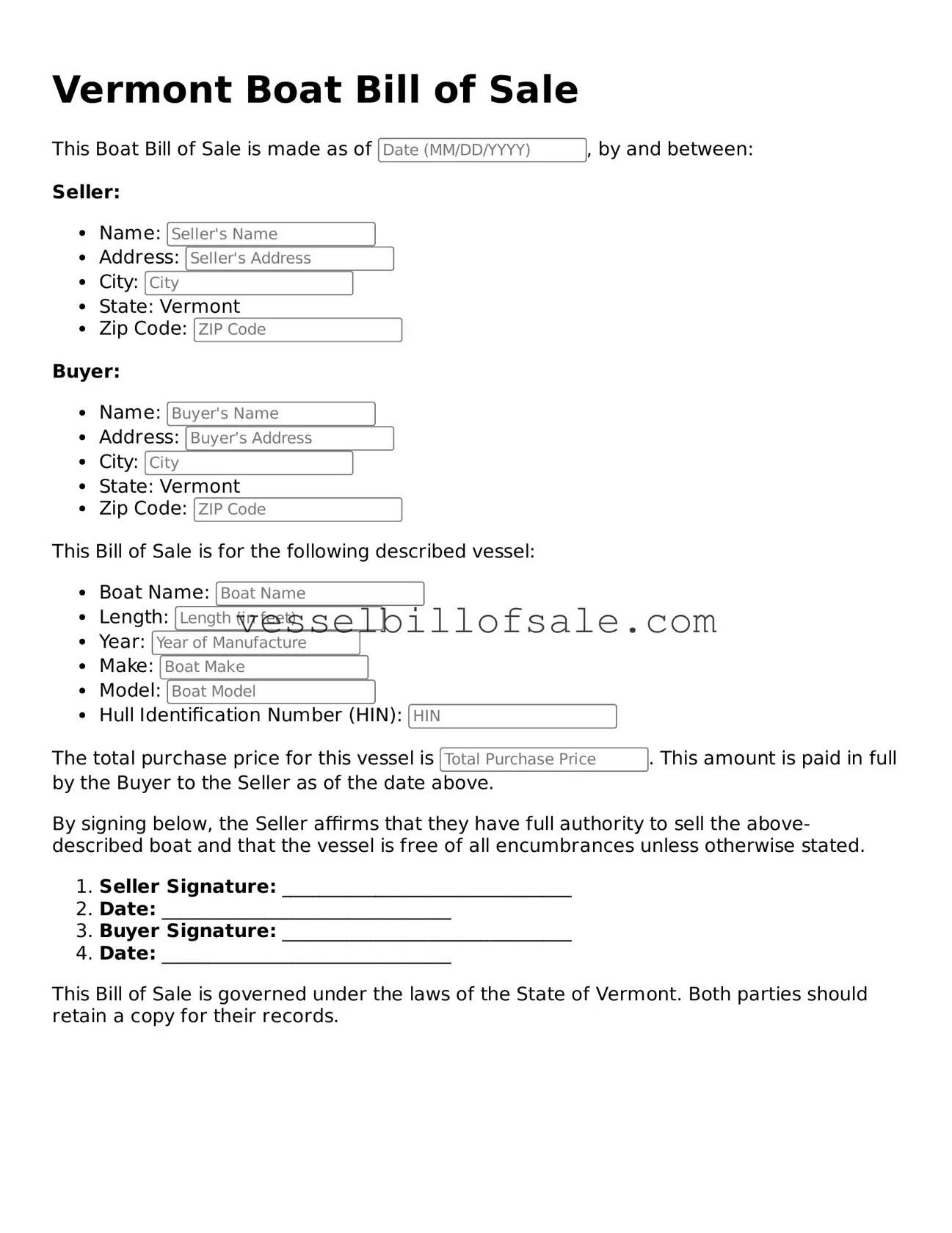Key takeaways
When filling out and using the Vermont Boat Bill of Sale form, keep these key takeaways in mind:
- Accurate Information: Ensure all details about the boat, such as the make, model, year, and hull identification number (HIN), are correct. Inaccuracies can lead to complications.
- Seller and Buyer Details: Include full names and addresses of both the seller and buyer. This information is crucial for record-keeping and future reference.
- Sale Price: Clearly state the sale price of the boat. This figure is important for tax purposes and may affect registration fees.
- Signatures Required: Both the seller and buyer must sign the document. Without signatures, the bill of sale is not legally binding.
- Date of Sale: Record the date when the sale takes place. This date is essential for tracking ownership and registration.
- As-Is Condition: It is advisable to include a statement indicating that the boat is sold "as-is." This protects the seller from future claims regarding the boat's condition.
- Keep Copies: After completing the form, make copies for both the seller and buyer. This provides proof of the transaction for both parties.
- Registration Requirements: Remember that the bill of sale may be needed for the buyer to register the boat in their name with the Vermont Department of Motor Vehicles.
- Notarization: While notarization is not always required, it can add an extra layer of security and legitimacy to the transaction.
- Consult Local Laws: Familiarize yourself with any local laws or regulations regarding boat sales in Vermont. Compliance is key to a smooth transaction.
By keeping these points in mind, you can navigate the process of filling out and using the Vermont Boat Bill of Sale form with confidence.
